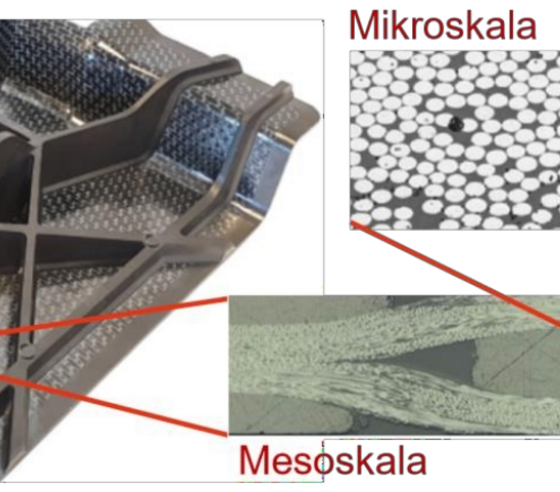Multi-scale modeling of the nonlinear damage behavior of carbon fiber reinforced thermoplastics


Thermoplastic fiber-reinforced composites (TPFRC) offer several advantages over conventional thermosets. These include the ability to be repeatedly heated, formed, and cooled, which results in various advantages such as short cycle times, increased toughness, easy storage and handling, and better recyclability.
It is evident, however, that the material behavior of TPFRC remains complex, and the existing models are still unable to adequately address all the relevant aspects. In particular, the prediction of damage behavior, which is essential for structural analysis, is not yet possible in many cases. It is thus necessary to consider the viscoelastic or viscoplastic properties of the thermoplastic matrix on the micro- or mesoscale (see Figure 1, right), as well as the delamination of individual layers in the layer composite.
In this project, we are working together with Brett Bednarcyk and Evan Pineda from the NASA Glenn Research Center, Ohio, USA. They will visit us as Mercator Fellows for several months at a time.
This research project employs an experimental database and an innovative multi-scale approach to develop a simulation tool that can accurately predict the non-linear damage behavior of TPFRP. The distinctive features of this simulation tool include the integration of damage and plasticity or viscoplasticity, the elimination of mesh dependency through gradient expansion, and the dependence on the size of the microstructure section under consideration. To guarantee the aforementioned, a novel homogenization concept is being investigated that is also applicable to significant deformations and softening due to localization.
